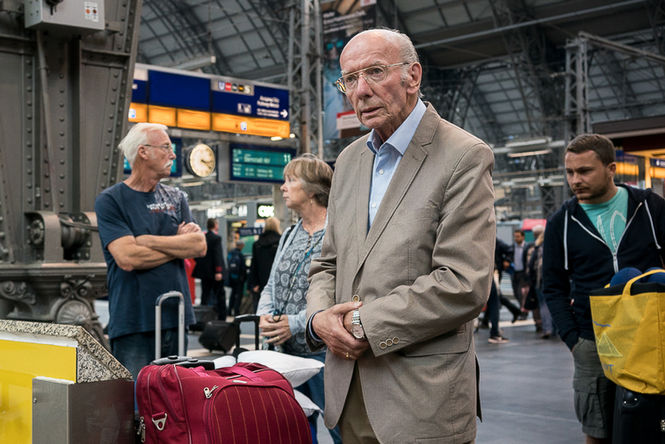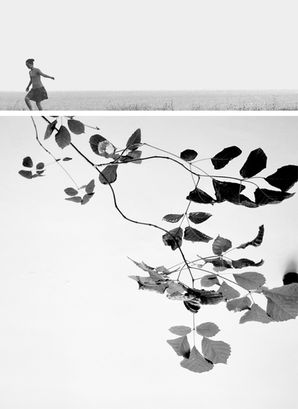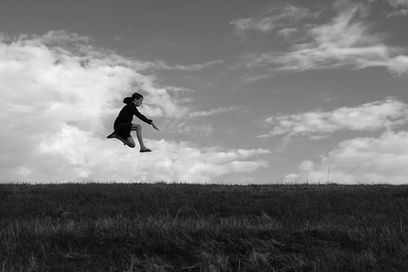
HAUPTBAHNOF
September 14, 2020
INTERVIEW
PHOTOGRAPHY Paul Kessel
INTERVIEW Melanie Meggs
As we navigate through the chaos of everyday life, it's easy to become consumed by the hustle and bustle of our surroundings. Yet, despite all this distraction, there are those who can still find beauty in the noise. Paul Kessel is one of those people. A street photographer from New York City, Paul has been capturing candid moments around the world for over thirteen years. With a background in clinical psychology, psychoanalysis and university teaching, Paul began his journey into photography just before his 70th birthday, enrolling in classes at The International Center of Photography. Now thirteen years later, the street photographer from New York City has won a number of awards, had his work exhibited in over eighty group showings, and has had four solo shows.
Paul's style has evolved from candid portraits of people to capturing candid street scenes in motion. He compares his passion for street photography to playing a sport - “usually requiring a warm-up period, then some momentum is established, until finally a good shot is captured amongst many forgettable ones.”
Due to the pandemic, Paul's days of shooting on the streets have been put on hold for now. To satisfy his 'itchy shooting finger', he has done a self-portrait project at home. However, he is eagerly waiting to get back out shooting once more.
In this interview we will be exploring Paul's photography series 'Hauptbahnhof' about the main train station in Frankfurt, Germany. This train station is a major hub for travel in Europe, and Paul has spent a lot of time there and created some personally meaningful photographs. All his photographs are candid, each telling a story, isolating his subject among the chaos of the main train station. Come join Paul on this journey as we explore the beauty of capturing moments in motion.

“Over the past fifty years, I have been to Frankfurt Germany almost yearly and I also lived in the city for two years. Of course, over all of that time, many life events occurred including highly emotional ones, particularly divorce and child custody issues. Countless times, I have passed through the main train station. It is called 'Hauptbahnof'. After I began candid street photography, about eight years ago, I became more aware of light and this venue has an interesting skylight. Because of that, I went there to photograph. I had no project in mind beyond photographing people that interested me and doing it fairly close up. Eventually, I had enough photos to think of it as a project.”
IN CONVERSATION WITH PAUL KESSEL
THE PICTORIAL LIST: Paul, what drew you to photography or is it something that you were always interested in?
PAUL KESSEL: I always owned a camera and had a latent interest in photography. However, it was put away in a drawer almost all of the time. There were relatively infrequent periods of photographing until I decided to pursue it seriously in 2008. The primary reason I began, is that my daughter started a career in photography at age 23. Her mother had an MFA degree in video and prior to her video interest, she studied photography in college and photographed my daughter a lot. My daughter eventually became a prop stylist and frequently works with photographers.
TPL: You mentioned to us that you photograph unnoticed. How did you do go about achieving this?
PK: My camera has a flip down back screen, and I looked down at it after I spotted a potential subject walking through or standing in decent light. I pretended I was fiddling with the camera.
TPL: Is there anything you want to express through your photography? And what are some of the elements you always try to include in your photographs?
PK: The aesthetics of light and composition coupled with a lifetime fascination of people and how they present themselves is sufficient. In more recent years, I have become more interested in how the photograph will look than the people in the photograph. Occasionally, a social issue may be part of what I am trying to express.
TPL: What has been the best advice/criticism you have ever received...that you have learned from?
PK: 1. Appreciate the friendships derived from photography and don’t be so hard on myself regarding outcome.
2. Fifty really good pictures in a lifetime is success.
I am inspired by my enjoyment of the process, the quest for the elusive photograph, the sense of belonging to a community of street photographers, friendships with others pursuing the same goals as myself, and probably the hope of making enough good pictures to have a published book.

TPL: Do you have any favourite artists you would like to share with us, and the reason for their significance?
PK: There are many photographers whom I admire. This includes those in the history of photography, teachers, and contemporaries. I will not attempt to mention them all. I don’t dare mention contemporaries as I don’t want to be in the position of excluding some of my friends. A good number of them are becoming well known as street photographers.
Most certainly, Cartier-Bresson, Winogrand, and Meyerowitz have been big influences. Alex Webb and Constantine Manos have been as well. I mention the latter two separately because the way Webb includes multiple layers and multiple activities in some of his amazing compositions and how Manos fills the frame are both inspiring and frustrating. I go after it, but I can’t do it. The quest keeps me going.
TPL: Do you prefer to photograph alone or with friends?
PK: I usually shoot alone. However, I find that some of my better photographs come when shooting with others. I function better with companionship. I find that this is true for me among many activities.
TPL: How does the equipment you use help you in achieving your vision in your photography? Do you have a preferred lens/focal length?
PK: I am often out for many hours at a time and I do not want to be burdened by heavy equipment. All I carry is one camera with one prime lens. I prefer a full frame camera. That preference increases the weight a bit. I either use a Sony A9II mirrorless camera or a Leica M10. With both I use a 35mm lens. If I know that I will be shooting in a setting with a dense crowd, I use a 28mm lens. The cameras in this project were a Sony A7s in the beginning followed by a Sony A9. All pictures were made with a 35mm lens.
TPL: Are there any special projects you are currently working on that you would like to let everyone know about?
PK: Because of the current pandemic, I have been doing self-portraits at home. I yearn to return to the street. For me, projects are rarely conceptualized. Instead, projects emerge from the edit of random photographs. It may be true that at times I do have a series in mind as I shoot as well.
TPL: What are some of your goals as an artist? Where do you see yourself or hope to see yourself in five years?
PK: My goal is to make about twenty more good pictures. I believe that I currently have about thirty. My criteria for “good” is high. It is easy to get “OK” photos. I don’t mean that. I am not referring to candid portraits. My interest is now more complex street scenes involving people. I am hoping a book can come out of it. At the age of eighty-three, I am not in a position to worry or plan for five years from now.
TPL: “When I am not out photographing, I (like to)…
PK: Be with family.”

Paul Kessel's photographic journey is a testament to the power of creativity and the ability of the human spirit to turn any age into an opportunity to create new art. Paul's images of the Frankfurt Hauptbahnhof capture the beauty and complexity of life in layers. His style of street photography is both playful and profound, and his images are a great reminder of the importance of capturing moments that can be remembered and shared for years to come. If you would like to see more of Paul Kessel's photographs, please visit his website or Instagram page.

































